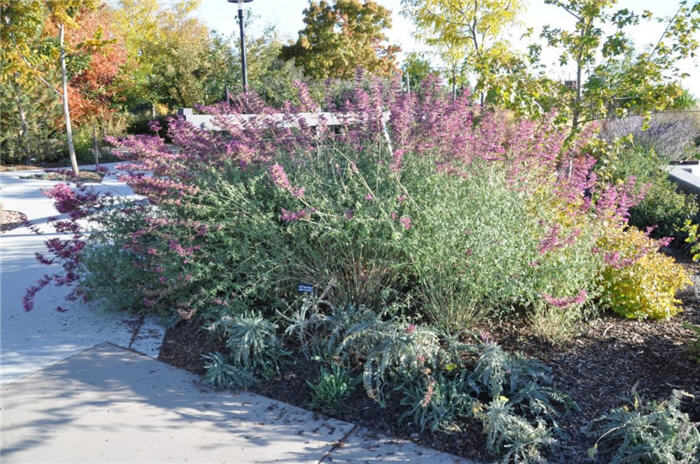| Botanical Name: Agastache 'Desert Sunrise' | |
| Common Name: Desert Sunrise Hummingbird Mint |

-
Anatomy
-
Culture
-
Design
Plant Type
Perennial, Herb
Height Range
3-6'
Flower Color
Lavender, Orange, Pink
Flower Season
Summer, Fall
Leaf Color
Green, Grey Green
Bark Color
n/a
Fruit Color
n/a
Fruit Season
n/a
Sun
Full, Half
Water
Low, Medium
Growth Rate
Moderate, Slow
Soil Type
Sandy, Clay, Rocky
Soil Condition
Average, Poor, Well-drained, Dry
Soil pH
Neutral, Basic
Adverse Factors
n/a
Design Styles
English Cottage, Meadow, Mediterranean, Ranch, Spanish, Native Garden
Accenting Features
Fragrance, Showy Flowers
Seasonal Interest
Summer, Fall
Location Uses
Perennial Border, Foundation, Raised Planter
Special Uses
Cut Flowers, Mass Planting, Small Spaces
Attracts Wildlife
Hummingbirds
Information by: Stephanie Duer
Photographer:
Photographer:
-
Description
-
Notes
This is a strikingly beautiful agasatche, with tall spikes of large, tubular, orange, pink, and lavender blossoms, which go from midsummer to through fall, usually to the first frost. Foliage is a lovely grey green, and the entire plant is delightfully, mintily fragrant. Grows about 40 to 48 inches tall and about half as wide. Attacts butterflies and attention. For sunny borders. A High Country Gardens introduction.
Grow in average, dry to medium moisture, well-drained soils in full sun to part shade, though best in full sun. Good soil drainage is essential. Plants will perform poorly and may not survive winter in unamended clay soils or over-watered soils. Plants tolerate heat and some dry soils once established. Deadhead spent flower blooms to promote additional bloom. Cut back the dead stems in late winter to early spring. Sandy/gravelly mulches will protect plants and help to avoid onset of rot.